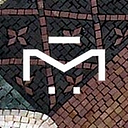The Importance of Tradition; Five Must-Know Ethnic Mosaic Styles
Nurturing cultural diversities is more important today than at any other time in human history. Overuse of technology, uniformity of media, and dark corners of social networking have done their damage and people seem to need to remember their ancestral traditions and legacies more and more. One of the main elements of every culture is its art, and one of the oldest art forms is mosaic, so let’s find the most amazing ethnic mosaic styles in the world.
MAYAN MOSAIC STYLE
Native Americans used their boundless creativity to express their worship of the gods. Their ethnic mosaics represent their belief that every living creature has its rightful place in the universe. Furthermore, Mayans had a particular symbolism for every color, so the use of every color in a mosaic had a deeper meaning. For example, red is the color of blood and the sun, representing life, green is a royal color representing fertility and eternity, etc.
Mayan mosaic art is known for its usage of pieces of malachite, serpentine, shell, and turquoise, that were never cut into tesserae. They were used as they came, in different shapes and sizes. The mosaic artworks were practical and decorative, as they were used for both ritualistic and symbolic purposes.
PERSIAN MOSAIC STYLE
The history of mosaic art in Persia, or what is known as modern-day Iran, dates all the way to its prehistoric roots. The sole application of mosaic tiles was considered to be the dominant form of architectural decor. Keeping that in mind, it is no wonder that Iran remains one of the most significant centers for the evolution and development of tile work. the use of mosaic tile art in Persian architecture has advanced to the point that mosaic art is now its integral component and most distinguishing feature.
Early mosaic artists developed the use of strongly colored stone and brick to create various mesmerizing geometrical patterns, that became Persian art’s most distinctive feature. All of the created triangles, circles, and other geometrical shapes are placed on a particular structure in a harmonic and orderly way. This consonance that comes from a variety is what makes Persian mosaic art unique and recognizable.
TURKISH MOSAIC STYLE
Seljuqs and Ottomans, Turkish Islamic empires were known for their use of a special type of tile called cini. It was a highly decorated mosaic tile used in numerous palaces and public squares in ancient Turkey. Furthermore, Turkish mosaic art as such is associated with glass mosaic art on a global scale, due to its large variety of patterns and shapes used on their famous mosaic lamps. These mosaic lamps combined crystal glass tiles and beads, which made them uniquely Turkish artwork in their own right.
These days not much has changed in Turkish mosaic art, and why should it be? Handcrafted tinted and non-tinted glass mosaic tiles, beads, copper, and filigree, are still all stunning, recognizably Turkish artistic features.
SPANISH MOSAIC STYLE
For most people, when you say “mosaic” they automatically think “Gaudi”, and rightfully so. Spain is the homeland of many famous artists from many artistic spheres, but especially mosaics. Antonio Gaudi revolutionized the art of mosaic making with his distinctive style and approach to craftsmanship. His Park Guell is considered a mosaic heaven and it is on every must-visit artistic destination list.
Spanish mosaic art is known for its unique tile types. However, whether the artist used Saltillo, Cement, Glazed Terracotta, or Talavera tiles, you can be sure they are strongly and vibrantly colored with a constant dash of white.
MOROCCAN MOSAIC STYLE
Moroccan mosaic tile design dates back to 700 A.D. Each tile was handcrafted, using natural materials and pigmentation, and each tile was made of clay. Modern Moroccan-style mosaic tiles are composed of layers of cement, pressed together and cured to ensure sturdiness and durability. These amazing tiles are versatile and heavily pigmented, so it is no wonder they can be seen in various decor eras of different cultures.
Moroccan art is famous for its floral patterns, calligraphic scripts, and geometric forms, as well as its mosaic rugs and murals. Color palettes are mostly matte dark with wide ranges of petrol blue and brown.
We hope you enjoyed this journey through various ethnic heritages as much as we did. Let’s expand on this topic in the comments. Feel free to tell us about the mosaic art in your respective country or region. Let’s nurture our cultural differences!
This article was originally published on Mosaics Lab’s website.
